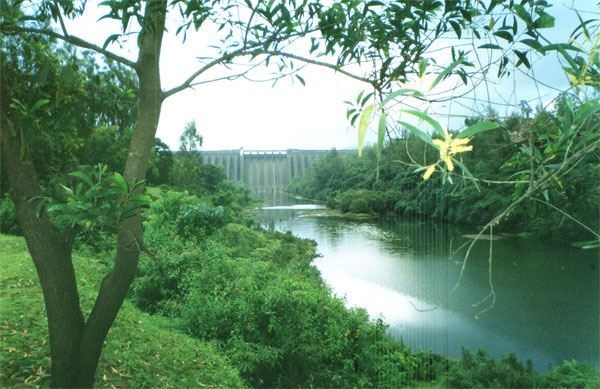
By Arun Bapat
December 11 is the 50th anniversary of the Koyna earthquake. The tremor claimed 199 lives and caused minor damage to the Koyna dam in Maharashtra and some houses in its vicinity -- but it is an event that affected science, society and engineering. Till the Koyna earthquake, peninsular India was considered quake-free and most big civil engineering projects were constructed under this assumption.
For the engineering community, the Koyna accelerogram, which had recorded a 0.67g acceleration, was a boon. This was the first accelerogram in India. Prior to this, most dam engineers and designers were adopting the Californian accelerogram for design purposes. This has been used for the construction of several dams, atomic power plants and refineries in India.
It was hypothesised that construction of the Koyna dam was the main cause and the earthquake was induced by the reservoir. A new acronym -- RIS or Reservoir Induced Seismicity -- was also coined. Advocates of this theory proposed two possible causes: Water in the reservoir trickled down and lubricated the underground fault causing an earthquake, or the weight of water in the reservoir was beyond the load-bearing capacity of the rock.
There were a number of seminars and conferences on RIS in the following years. Some scientists also joined the RIS bandwagon without realizing that they were batting on a weak wicket.
Both the causes proposed were negated on a scientific basis. When a lake-tapping experiment was conducted, it was found that there was no water or moisture in the rock, thereby eliminating lubrication as the cause. Computer programmes used to find the effective load of the reservoir water on the rock found it was around 3.5 to 4.0 kg per sq foot -- far less than the load-bearing capacity of the rock.
In fact, the late Dr K.L. Rao, an eminent engineer, scholar and a Union Minister, compared the Koyna reservoir sitting on Earth to a fly sitting on an elephant. The net result was the RIS was not accepted by a large number of scientists. Over the years, it was variously renamed RAS (Reservoir Associated Seismicity) and RTS (Reservoir Triggered Seismicity). The topic has now been abandoned.
Apart from the debate it triggered among seismologists, the Koyna earthquake had caused a severe damage to the development of irrigation and dam technology. Taking a wrong cue from Koyna, the construction of the Narmada project was challenged in various courts, delaying its commissioning by 11 years. The project was eventually completed.
But the Narmada protesters found fresh terrain at Tehri and the construction of this dam was also opposed. The main opposition was it may induce an earthquake. It was said that whether or not a dam is constructed, the Himalayan region would always have some earthquake activity. I remember that I was required to visit several hydro-electric projects in the country to install seismological instruments in and around the dam or project area.
After failures at Narmada and Tehri, the protest was shifted to Subansiri Dam in Assam. Here it took a somewhat dangerous turn bordering on violence. The equipment and machinery for the construction of dam were being hauled by the railways. Protesters sat on the railway track and blocked the passage of the train. This has further delayed the construction of the project. Now it has become almost a practice to object to the construction of any dam, irrigation project, hydro-power project or atomic power plant.
Considering the increased demand of power, we need more dams and hydroelectric and solar power generators. At present, some Himalayan states such as Sikkim, Uttarakhand and Himachal Pradesh are developing mini, micro, and medium hydroelectrical projects. In addition, Bhutan and Nepal are providing India a good amount of electricity generated at hydroelectric projects. In the Sahyadri mountain region of Konkan in Maharashtra about 2,200 sites have been identified for micro hydel power plants similar to the Himachal Pradesh model. The neo-environmentalists are opposing this, saying it would have an adverse impact on the environment.
Contemporary history tells us that till 1975 or so, no developmental project was opposed. I remember how the Bhakra and Hirakud Dams were jubilantly welcomed by everybody when Jawaharlal Nehru announced these projects as the new temples of development. But now, opposition to any developmental activity is seen practically every day -- whether it is construction of a flyover in the Malabar Hill area of Mumbai, or road widening in a city or building of an airport or a highway. People oppose it and fight the legal case up to the Supreme Court causing delays and cost escalations.
I sometimes wonder whether the roots of this trend of opposition to such projects can be traced back to the Koyna earthquake of 50 years ago.
(Dr. Arun V. Bapat is a seismologist and former head of Earthquake Engineering Research, Central Water and Power Research Station, Pune. The views expressed are personal. He can be contacted at arunbapateq@gmail.com)









